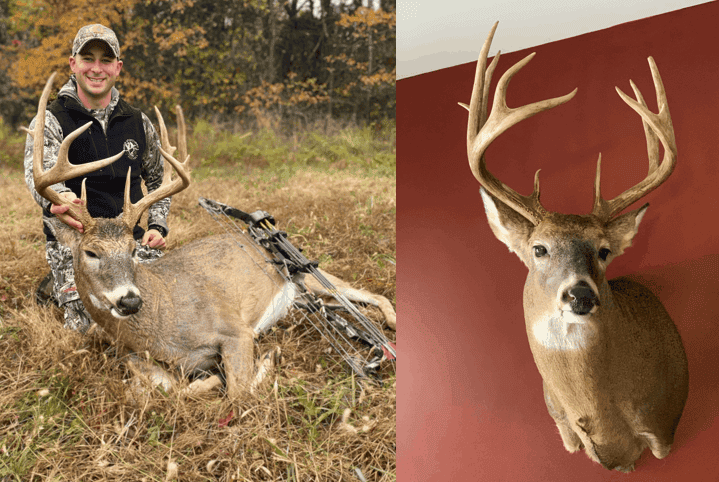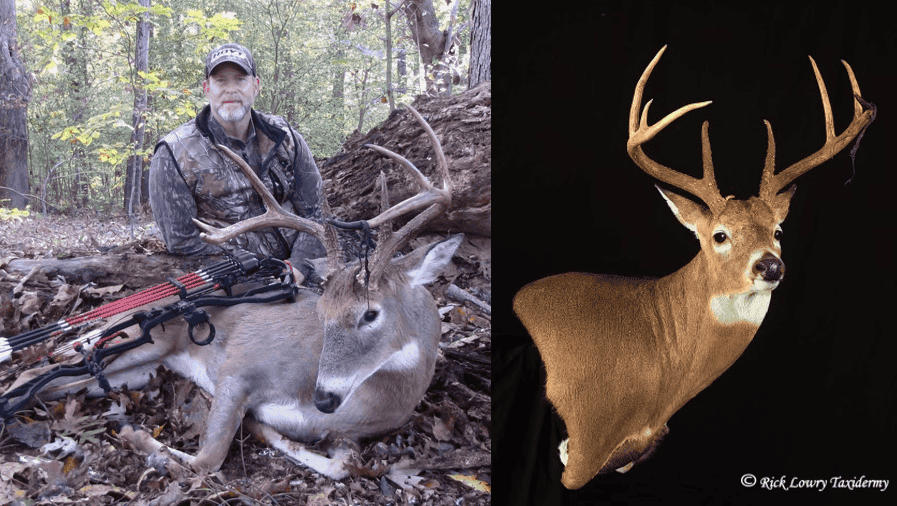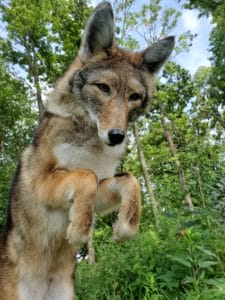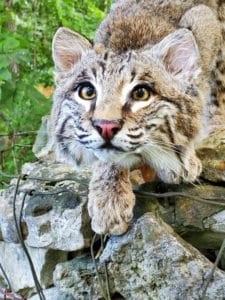5 Steps to Choosing the Right Taxidermist
Finding a taxidermist nearly anywhere in the U.S. is not a problem, but there is wide spectrum of skill when it comes to taxidermy, and there are plenty of hackidermists ready to take your hard-earned money. The average hunter isn’t a good judge of a quality mount but doing your homework and learning what to look for can make a big difference.
“Most people find a local taxidermist, or they price shop,” said USA Events Manager Kevin Grubbs. “I do the reverse. I don’t look for a deal. I look for someone who is really good and isn’t afraid to charge what they are worth in quality because you get what you pay for.”
USA Conservation Programs Manager Sam Phipps shares that sentiment and has learned to recognize and appreciate the difference in quality. On Halloween Day 2020, he harvested a gorgeous buck and got it mounted by James Suddarth of Suddarth Taxidermy.

USA’s Sam Phipps with the buck he harvested in 2020 and had mounted by Suddarth Taxidermy.
“When I hung that deer next to my other whitetail mounts, I had to move the others out of the room because the quality of the new one was so much better,” Phipps said. “I put the old ones in my kids’ rooms. Since then, James is the only person I go to. He takes his career extremely serious and uses the best materials. That’s worth paying for.”
How to Choose a Taxidermist:
1. Interview Them
“I interview taxidermists. Most good ones appreciate that. If a taxidermist brushes you off, you probably won’t be satisfied because he or she doesn’t really care about what you want – you’re just another number,” Grubbs said. “Good taxidermists are artists by nature. If they don’t approach it that way, it’s probably a hack.”
Grubbs always asks about turnaround time and looks for something between nine and 12 months. “A taxidermist who can turn something around in four months is probably just starting, really bad, or doesn’t have a big clientele,” Grubbs said, “but I generally don’t want to wait much longer than a year, either.”
It’s also important to ask what mannequins they use. According to Grubbs, a Midwestern deer is a different subspecies in his home state of Virginia. “They are built different, so I want to ensure the taxidermist is mounting the deer on the appropriate mannequin.”

When USA’s Kevin Grubbs looks for a taxidermist, he doesn’t price shop. He looks for someone who is really good and isn’t afraid to charge what he/she is worth in quality.
2. Determine How Engaged You Can Be

courtesy of Suddarth Taxidermy
“I want to have the ability to be involved in the process,” Grubbs said. “It’s important not to bug taxidermists and allow them to do their best work, but I want to provide my vision as well.”
According to Kevin Piltz, father of USA Shooting Events Manager Chris Piltz, a good taxidermist will ask you for pictures. “I often take photos in the field, so the taxidermist can see what the animal looked like before he even starts because I want the mount to look exactly like the animal I shot. I may shoot a buck with a big scar on his face from a fight with another buck – that’s part of the story I want to keep,” he said.
You also want to find a taxidermist willing to help guide you on the animal’s pose based on where it’s going to be placed and the space available.
“A good taxidermist should also be willing to speak up if you suggest something foolish or unrealistic,” Grubbs added.
3. Look at Photos
“I look at a lot of photos. If a taxidermist doesn’t have a good website with professional photos, it’s a red flag for me,” Grubbs said.
He looks closely at the eyes. “The eyes really determine a quality mount, and that’s probably the hardest thing to do,” he said. “Even if I’m having a whitetail mounted, I look at taxidermists’ predator mounts. If they can get the eyes right on those, they can do deer. Good taxidermists know that, so they take really close photos of eyes for their websites.”
4. Visit the Shop and Contact References
Visiting the shop is ideal if it’s within driving distance. If it’s not, ask for references and contact them. That’s a good thing to do even if you can visit the shop since you want to evaluate the taxidermist’s skills as well as how easy they are to work with, especially if you want to be involved in the process.
5. Learn to Judge Quality

courtesy of Suddarth Taxidermy
According to James Suddarth of Suddarth Taxidermy, there are five key areas a taxidermist must focus on: two eyes, two ears, and the nose. “The cape kind of is what it is,” he said, “though you have to keep the seam tight and the hair out of it, so the mount doesn’t look like it has a lion’s mane.”
Piltz agreed that you want to ensure you don’t see the stitching, which can be extra difficult with an animal that has short hair and tight skin like a lion or some African species. “But a good taxidermist can hide almost anything,” he said.
According to Suddarth, the eyes are critical on any mount. “There is now stuff you can put on them after they are painted to make them look wet on the bottom,” Suddarth said. “Shape is also important. You need to shape the eyes every day until the clay dries to avoid that wide open, deer-in-the-headlights look. I want the animal to look relaxed.”
Grubbs also pays special attention to the nose details including the color of the nostrils and nose pad as well as the overall anatomy of the nose.
Suddarth recommends checking out two to three taxidermists and taking photos of their mounts to compare them side by side because “the average hunter may not see the differences until they see the mounts together.”



